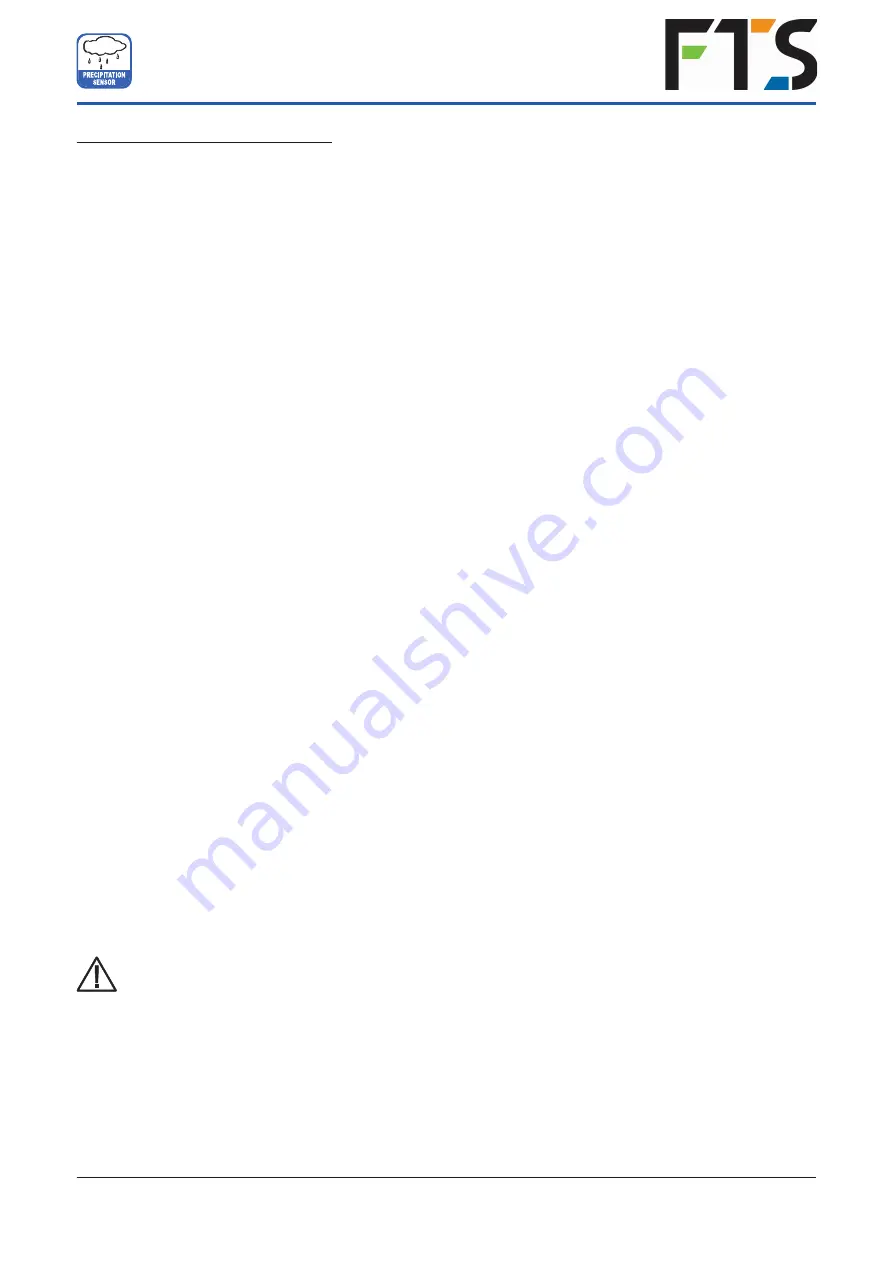
Remark to SDI-12 ‘Break’ signal
Since the
RAINE-HYDRO
does not have a sleeping mode it does not need to be ‘awakened’. This means that
it
ignores the “Break“ command. Therefore all regulations associated to the ‘break’ command do not have to
be considered.
9.1
Total Precipitation
For the measurement of the precipitation amount from data set to data set via the serial protocols the di
ff
erence
of the total precipitation amount to the previous value must be calculated.
Note: The value over
fl
ow of the precipitation total must be taken into account in the calculation of the
di
ff
erence. The value over
fl
ow occurs at 60000 g of collected liquid. This results in a value over
fl
ow at
3000 mm for sensors with a collecting surface of 200 cm² and a value over
fl
ow at 1500 mm for sensors
with a collecting surface of 400 cm².
9.2 Pulse
Output
Each pulse corresponds to a prede
fi
ned amount of measured precipitation. The resolution factor range is
0.01...200 mm per pulse. This resolution factor can be con
fi
gured with the
rain[e]
Commander along with the
closing time / pulse width. The duty cycle is 1:1 - in other words the closing time has the same length as the pause
time.
If more pulses have to be returned than possible with the given resolution and closing time, the remaining pulses
will be queued and returned as soon as there are no new pulses added. This means e. g. that if a closing time of
200 ms and a resolution factor of 0.01 is chosen - equivalent to 300 pulses per minute - and it is raining with an
intensity of 4 mm/min for two minutes and 1.9 mm/min thereafter - equivalent to 190 pulses per minute, the pulse
output will return 300 pulses in each of the
fi
rst two minutes and another 200 pulses will be queued. In the third
minute again 300 pulses will be returned - 190 for the intensity in that minute and 110 from the queue. Accordingly
280 pulses will be returned in the fourth minute and 190 pulses in the following minutes, since there are no further
pulses left in the queue.
10
Inspection and Troubleshooting
•
Visual checks for contamination should be done on a regular basis - depending on the environment and
seasonal situation (spider and bird population, pollen, leaf fall). According to chapter 6 of the “VDI Guidelines
- Environmental meteorology - Meteorological measurements - Precipitation, VDI 3786 Part 7 (December
2010)” we recommend monthly checks. In areas with high air pollution weekly checks might be necessary to
ensure correct measuring results.
•
All water-bearing parts should be cleaned regularly. Rinsing should be su
ffi
cient to clean the sensor from most
contamination. Dirt clinging to the collecting funnel or outlet pipe has to be removed carefully. Slight pollution of
the collecting vessel is not critical. The collecting vessel can be cleaned with water and a mild cleaning agent.
•
Make sure the instrument is in a stable and perpendicular position and check the ring, the funnel surface and
the sensor for damages.
•
Keep the measurement site free from overgrowing vegetation.
•
The bird protection has to be removed before the frost period.
Please be careful while cleaning the collecting vessel to prevent it from taking damage. The
RAINE-HYDRO
and the collecting vessel must not be cleaned with steel brushes or similar
tools or aggressive detergents.
24
SDI-RAINE-HYDRO
USER MANUAL
700-SDI-RAINE-HYDRO Rev1 03 Mar 2021
Part# 21184


















